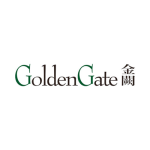Attempting to establish a trademark infringement test, on December 18 2019, the China National Intellectual Property Administration (CNIPA) released draft Criteria for Determining Trademark Infringement (Consultation Draft), inviting public comments.
The Consultation Draft consists of eight chapters and 58 articles. In accordance with Article 4 of the Consultation Draft, the first step for determining whether a trademark is infringed is to assess whether the suspected infringing act constitutes "use of trademark" as stipulated in Article 48 of the China Trademark Law. Under the Draft Consultation, the forms of use of a trademark include i) attaching the mark to goods or packages and containers of goods; or ii) labelling the mark on transaction documents and instruments; or iii) displaying the mark in advertisements and promotional activities (including traditional media, APPs, websites, WeChat, etc.).
Pursuant to Article 15 of the Consultation Draft, when determining whether the alleged trademark is identical or similar, the registered trademark of the right holder instead of the right holder's trademark in actual use should be used as a comparison with the alleged infringing trademark. Their key portions which function as identifiers should be compared. In principle, assessing the similarity of the marks should be based on the ordinary caution possessed by the relevant public with general knowledge and experience in selecting and purchasing related goods (services). The approaches of isolated observation, overall comparison and key part comparison should be adopted, and the marks' pronunciation, font, meaning, arrangement and other elements should be comprehensively taken into consideration. Specifically, the Consultation Draft lists certain circumstances where a word mark and device mark may be determined as an identical trademark or similar trademark.
Under the Consultation Draft, proof of actual confusion is not essential for infringement. Confusion in the context of trademark infringement only needs likelihood of confusion, not the actual occurrence. The Consultation Draft asserts that "confusion" set forth in Article 57 of the China Trademark Law includes two circumstances where the use of a mark makes the relevant public mistakenly believe that the goods (services) involved are produced or provided by the right holders or make the relevant public mistakenly believe that the provider of the goods (services) involved has investment, licensing or a cooperation relationship with the right holders.
It is worth noting that the Consultation Draft imposes obligations against marketplace owners, exhibition organisers, landlords of sales counter and e-commerce platform owners. If they know or ought to know that the operators in the market, exhibitors, counter lessees, and e-commerce operators engage in trademark infringement but do not prevent the infringement or they have no knowledge of the infringing acts, but fail to prevent such acts after being reminded by trademark enforcement agencies, their failure to perform their duty will be deemed as trademark infringing acts under Article 57(6) of the Trademark Law.
Some special infringements under the Consultation Draft are highlighted as follows:
1) A business operator uses identical or similar trademarks to a right owner to register a domain name, and the related goods (services) transactions are conducted through the domain name. This can easily cause a misidentification.
2) On the gifts and prizes offered by a business operator to the relevant public, the operator uses a trademark which is identical or similar to the registered trademark of the right holder on the same or similar goods, which can easily cause confusion.
3) A business operator uses recycled containers and other renewable resources to recreate its own goods and uses its own trademark without removing or covering the registered trademark of the right owners on the original containers. This can easily cause confusion.
Finally, pursuant to Article 60 of China Trademark Law, in the event of trademark infringement occurring twice within five years or other serious circumstances, a heavier punishment shall be imposed. The Consultation Draft provides the specific guidelines in relation to "more than two times within five years" and "other serious circumstances". According to Article 55 of the Consultation Draft, "more than two times within five years" refers to a situation where the infringer repeatedly conducts trademark infringement within five years from the date when his first trademark infringement is determined by an effective administrative determination or a court judgment. As well as this, "other serious circumstances" cover one of the following circumstances:
i) The illegal operating revenue is more than RMB 1 million ($142,000).
ii) The geographic locations where infringement occurs involve more than three provinces or more than six prefecture level cities, and the illegal operating revenue is more than RMB 500,000.
iii) The infringer simultaneously infringes the rights of more than two right holders, and illegal operating revenue is more than RMB 500,000.
iv) The infringing act occurs in the fields of public life and health and safety such as food, medicine and medical equipment etc.
v) The infringement lasts for more than 18 months.
vi) The infringing act causes significant negative international and social influence.
vii) The infringed trademark was once recognised as a well-known trademark.
By introducing specific, uniform and comprehensive guidelines, the Consultation Draft should inevitably enhance trademark protection, and foster a sound business environment.
Tom Zhang and Linda Zhao













